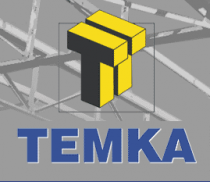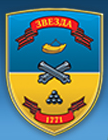National Mining Hall of Fame Names 2022 Inductees
2022 National Mining Hall of Fame Inductees – The National Mining Hall of Fame and Museum (NMHFM) is pleased to announce the class of 2022 National Mining Hall of Fame inductees. This year’s inductees, selected by the National Mining Hall of Fame’s Board of Governors, are being honored for trailblazing a commitment to sustainability concepts, leading the mineral royalty business, building academic mining programs, innovations in coal mine ground control and longwall mining, and advocating for a strong domestic mining industry to supply the nation’s needs for critical minerals.
The Prazen Living Legend of Mining Award, named for renowned mining artist Gary Prazen, will be awarded to an industry-leading organization with a significant commitment to educating and engaging the public stakeholders.
2022 National Mining Hall of Fame Inductees:
Timothy J. Haddon (1948- ) was once described by the Mining World News as “a new generation of mining CEO who combines the high-risk, pull-out-all-stops legacy of yesterday’s miners with the modern executive’s keen awareness that excellent community and government relations are critical to the survival of a mining company.” Haddon was a trailblazer in sustainable mining concepts in the 1980s, a mining industry leader into the 1990s, and remains a force in the education of technically proficient, business savvy, ethical, and humanitarian engineers. A 1970 graduate of the Colorado School of Mines (CSM), Haddon first joined Texasgulf Inc. He joined AMAX Inc. in 1976, eventually becoming President/CEO of AMAX Mineral Investments. In 1989, he was appointed President/CEO of Amax Gold. Haddon moved on to co-found First Dynasty Mines in 1994 and to become President/CEO of Archangel Diamond Corp. from 1997 through 2002. He was Chairman of Anatolia Minerals Development Limited from 1998 until 2011, and Chairman of Alacer Gold Corp. until his retirement in 2013. As Chairman of Thompson Creek Metals Company, Haddon was involved in the sale to Centerra Gold. Haddon is an Emeritus member of CSM’s Board of Trustees and former vice-chairman, a staunch proponent of CSM’s Humanitarian Engineering program, and was awarded the University’s Distinguished Achievement Medal in 1993.
Pierre Lassonde (1947- ) is globally recognized as a mining executive, business innovator, analyst, philanthropist, and author. He once said “If you want to make a difference, you have to pick where you want your support to be. I have said a thousand times – the natural resources of a country are not its commodities, but its people. So that is what we invest in.” Lassonde earned a B.S. in Electrical Engineering in 1971 from the École Polytechnique de Montréal and an MBA from the University of Utah in 1973. He started his career with Bechtel Engineers and Rio Algom before joining Beutel, Goodman & Company Ltd., a leading money management firm, in 1980. Lassonde and Seymour Schulich formed Franco-Nevada Mining Corp. Ltd. in 1983, the first publicly traded gold royalty company on the Toronto Stock Exchange. They also formed a sister company, Euro-Nevada Corp. Lassonde organized consolidations of Franco-Nevada, Euro-Nevada, and Australia’s Normandy Resources and, in 2002, merged those assets with Newmont Mining in a deal that put Newmont among the world’s largest mining companies. Lassonde was Newmont’s President from 2002 to 2007 and served as Vice-Chairman in 2007. When Newmont spun off Franco-Nevada in 2007, Lassonde and several associates launched the largest mining Initial Public Offering in North American history to fund acquisition of the portfolio and reestablish Franco-Nevada. Today, Franco-Nevada is among the world’s largest royalty companies. In 1990, Lassonde wrote The Gold Book: The Complete Investment Guide to Precious Metals. A great philanthropist, Lassonde and his late wife, Claudette, donated millions of dollars to education and the arts.
Thomas J. O’Neil (1940- ) has demonstrated outstanding leadership throughout his career as a mining industry corporate executive, educator, board member, author, and volunteer. He graduated from Lehigh University’s Mining Engineering program in 1962. He started his career in Utah at the Kennecott Copper Company, but soon enrolled at The Pennsylvania State University and earned an M.S. in Mining Engineering in 1966. O’Neil’s 1967 technical paper “Computer Simulation of Truck Haulage in Open Pit Mines” won him the Robert Peele Award for best paper from the Society for Mining, Metallurgy and Exploration (SME). After completing his M.S., he worked for Ingersoll-Rand before joining the Mining and Geological Engineering (MG&E) Department of the University of Arizona (UofA) as an Instructor in 1968. He also enrolled in its Ph.D. program. He completed his Ph.D. in Mining Engineering and advanced to Associate Professor and MG&E Department Chair in 1972 and Professor in 1978. O’Neil acquired the San Xavier Mine for the UofA as an experimental laboratory for students to gain firsthand mining experience. He also started a graduate program in Mineral Economics to prepare students for the business aspects of mining. He edited the 16th Application of Computers and Operations Research in the Mineral Industry in 1979 and co-authored Mine Investment Analysis in 1984. O’Neil left the UofA in 1981 to join Amoco Metals/Cyprus Minerals and rose quickly through the Cyprus organization. He joined Cleveland-Cliffs Inc. in 1991, eventually becoming President and Chief Operating Officer in 1994. He was inducted into the National Academy of Engineering in 1999 and was elected President of SME in 2003. He retired from Cleveland-Cliffs in 2003.
Syd S. Peng (1939- ) is among the world’s most renowned experts in ground control and longwall mining. He has educated thousands and authored numerous textbooks and technical papers. Peng and his team have introduced numerous new ground control technologies, many of which have become standards of the industry. Born in Taiwan, Peng earned a Mining Engineering diploma from the National Taipei University of Technology before earning an M.S. at the South Dakota School of Mines and Technology and a Ph.D. at Stanford University. He joined the U.S. Bureau of Mines, Twin Cities Research Center in 1970. Upon moving to West Virginia University (WVU) in 1974, Peng began his research on longwall equipment. He Chaired the Mining Engineering Department from 1978 to 2006. Peng recognized that coal operators did not always know what ground control technologies were available, so he organized the International Conference on Ground Control in Mining in 1981 for industry stakeholders to exchange information through the Society for Mining, Metallurgy and Exploration (SME). In 1985, he established the Longwall Mining and Ground Control Research Center at WVU. Surface subsidence prompted Peng and Y. Yuo to develop the Comprehensive and Integrated Subsidence Prediction Model in 1989 which is still in use today. In 1998, the State of West Virginia appointed him Director of the Coal and Energy Research Bureau. He was inducted into the National Academy of Engineering in 2007. Peng retired from WVU in 2013. He and his wife, Felicia, have endowed various awards, professorships, and scholarships.
Sheldon P. Wimpfen (1913-2003) was a tireless advocate for a strong domestic mining industry capable of supplying our nation’s need for critical and strategic minerals. Wimpfen graduated in Mining Engineering from the Texas College of Mines and Metallurgy in 1934 and embarked on a colorful, globe-trotting career. Wimpfen honed his practical skills at mines in the U.S. before joining mines in the Philippines in 1937. With the threat of Japanese invasion, he returned to the U.S. and became Assistant Superintendent of the Benton Mine in Oregon before heading to the Potosi and Pulacayo tin mines in Bolivia. He then served in the Pacific Theater as a Marine. After the war, Wimpfen became Assistant Editor of Mining and Metallurgy and subsequently Editor of the Mining Congress Journal. The post-war need for uranium led him to the Atomic Energy Commission (AEC) as Assistant Director of the Division of Raw Materials. Wimpfen critically examined the uranium procurement program, recommended how to improve and implement it, and received full implementation authority. The AEC’s procurement program helped to set off a uranium rush that resulted in about 800 uranium mines operating on the Colorado Plateau by 1955, spring-boarding the AEC’s ability to provide atomic energy for both defense needs and peaceful purposes. After the AEC announced that it would no longer purchase yellowcake, Wimpfen left to become Vice President of Reynolds Mining Corp. in 1959, and President and General Manager of Southern Peru Copper Corp. in 1967. From 1970 to 1980, he was Assistant Director and later Chief Mining Engineer of the U.S. Bureau of Mines. Resuming his literary pursuits in retirement, Wimpfen wrote a memoir, Tin Peaks and Silver Streams, and two historical fiction novels.
2022 Prazen Living Legend of Mining Award
The education outreach program at the Lowell Institute for Mineral Resources works to help K through 12 students and teachers understand the importance of mining and mineral resources in everyday life. By helping students learn more about how they use minerals, where those minerals come from and the diverse people who work to obtain those minerals, the program hopes to encourage more young people to understand how mining supports their lives and to see themselves as part of the mineral industry. The program does this by providing standards-based virtual and in-person classroom presentations to K-12 students across the state of Arizona, hosting the “Mineral Resource Discovery Workshop” for 6-12 students at Flandrau Planetarium and Science Center, producing the “Minerals Make It” video series on YouTube, putting together Google Earth based virtual tours of mines in Arizona, maintaining the outreach website, and by creating virtual activities for students wherever they may be. The education outreach program also works with the recruitment outreach program to guide students on their journey from user of mineral resources to provider of those resources. The Mining Foundation of the Southwest provides the funding for the program’s Education Outreach Coordinator. The program reached over 5,000 people in 2021 which included 3,700 views on YouTube, virtual presentations to 542 students, and in-person presentations to 836 students.
Regarding this year’s honorees, National Mining Hall of Fame and Museum Board of Directors’ Chair David Travis stated, “We are proud and honored to be inducting such a worthy class of mining legends. I would also like to thank our Board of Governors who are dedicated to providing a great list of nominees every year.”
Since 1987, the National Mining Hall of Fame and Museum, located in Leadville, CO has been a national monument to the men and women who champion the discovery, development, and processing of our nation’s natural resources, as well as a national institution educating the public about the undeniable relationship of mining to our daily lives.
The 35th annual Induction Banquet will be held the evening of October 29, 2022 at the Denver Marriott South at Park Meadows in Lone Tree, CO. Visit www.MiningHallOfFame.org for updates. Sponsorships are available; contact Stephen Whittington, Executive Director, at director@mininghalloffame.org for details.
View source version on businesswire.com: https://www.businesswire.com/news/home/20220322006031/en/




